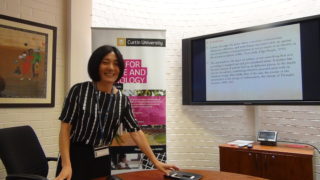2019 ACAT Seminars
Small, thick, and slow: Thinking about data and research publication in the Humanities in the age of Open and FAIR by Daniel O'Donnell
We often speak about “Scholarly Communication” as if it is a single enterprise. This is despite our experience, which suggests that every (sub)discipline has different understandings about almost every part of the process: from the value of journals, to the function of referees, to the very point of publication.
This is particularly true of the Humanities, which often seem like a complete outlier when it comes to many core aspects of modern networked research communication. They have different monopolistic presses, can be even more difficult to capture using standard bibliometric tools, and, perhaps most importantly, can have completely different understandings as to the purpose and nature of their major processes and elements.
In this paper, I look particularly at the question of data and their relation to research publication in the Humanities. I argue that at least some types of traditional humanities data are quite different from those dominant in other disciplines, and that the failure to recognise this has prevented us from fully understanding the strengths of traditional approaches to research in these disciplines.
I conclude by discussing an approach to the publication and citation of data in the Humanities that attempts to account for these differences and make it easier to incorporate traditional research in “big data” approaches to aggregation and reuse.
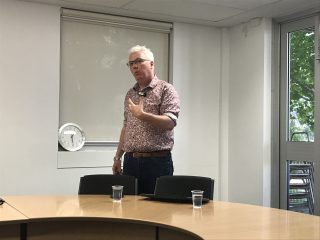
Little Kids, Big Business on Social Media by Alexandra Ruiz-Gomez
Sharentng (parents sharing content and images of their children digitally) has become normalised behaviour on social media and a worldwide phenomenon (Blum-Ross & Livingstone, 2017; Leaver, 2015). The purpose of this research is to explore ‘sharenting’ practices as a means to launch ordinary kids to social media fame on Instagram. Why Instagram? It is the most under-explored SNS (social networking site) and the most popular platform amongst millennial parents. New parents, and millennial mums in particular, are considered to be responsible for the lion’s share of sharenting (Marasli, Sühendan, Yilmazturk, & Cok, 2016; Le Moignan, Lawson, Rowland, Mahoney, & Briggs, 2017).
Although popular media increasingly reports on the growing number of parents that share their kids’ content as their ticket to potential fame (Leaver & Abidin 2017), little academic research has explored sharenting driven by parents’ aspirations of social media influencer status and monetisation. In this type of sharenting, ordinary parents deliberately design and share content of their children targeting large audiences of strangers. Stories of successful kid influencers appear frequently in popular media feeding the perception that fame is attainable. Even though not all kids will achieve star status, this does not seem to stop parents from chasing digital fame for their kids.
Can anyone turn their kids into social media stars? What attention-seeking practices are parents using to capture eyeballs on Instagram from strangers? How do parents package their children’s lives for public consumption? What are the practices behind the accounts of successful kid influencers and how do these differ from other fame-seekers who never get any meaningful attention?
In sum, this study hopes to shed further light on the different practices carried out by parents driven by digital fame and fortune who share the lives and images of their children with strangers.
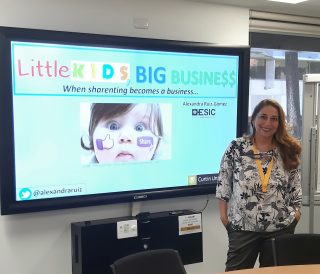
Intimate relationships, technology and abuse: What gender-based violence can teach us about protecting women online by Megan Lindsay Brown
Intimate partner violence (IPV) is a persistent global issue impacting the safety and well-being of individuals, primarily women and girls. In the United States, one in three women and one in four men report experiencing some form of IPV in their lifetimes (Black et al., 2011). Further, 55% of the total homicides of women in the United States are perpetrated by an intimate partner or an ex-intimate partner (Jack et al., 2018); and globally more than one-third of female homicide victims are killed by an intimate partner (Stöckl, Devries, Rotstein, Abrahams, Campbell, Watts, & Moreno, 2013). Recent developments in technology have brought about concerns regarding privacy, access to personal information, and the use of technology within abusive relationships. The most dangerous and persistent forms of violence rely on coercive control for instigating and maintaining a position of power within the relationship (Stark, 2009). Recent research developments show that an alarming pattern of everyday information communication technologies (i.e., mobile phones and social media) are being weaponized by abusers to further coercive control tactics (Dragiewicz, 2018). Using Johnson’s typologies of IPV as a framework, this talk will explore ways to differentiate types of technology-based abuse. The talk will include exploratory quantitative data, qualitative interviews, and past research that has highlighted the unique risks of women face online. Given the high-risks for IPV survivors, some have suggested going offline in order to remain safe. Discussion will include shifting the focus back toward the publics’ accountability for online publics, the responsibility of perpetrators, and why survivors need to access to a broader community and the ability to seek help online.
Megan Lindsay Brown, MSW, PhD is a Research Assistant Professor at Arizona State University in the School of Social Work. During her doctoral studies Brown’s research focused on the use of information communication technologies (ICT) and the impact of mediated spaces on human development, specifically young adult women. Her work has examined young adult dating relationships, online harassment, and interventions for intimate partner violence including online safety planning. Currently, her research is focused on the ways digital cultures shape and influence continued
gender-based violence, sexism, and intimate partner abuse.
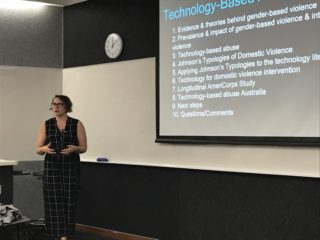
The role of universities in the growth of Shenzhen’s digital creative economy by Yao Cao
Shenzhen is a fast-growing city in southern China which has achieved remarkable digital economy performance. Over the past 40 years, the city has transformed from a rural village to a world-class megapolis. This project investigates relationships between universities and the digital creative economy in Shenzhen. This talk will introduce an initiative implemented by the Shenzhen government: ‘Shenzhen Virtual University Park’ (SZVUP), reporting on data gathered in Shenzhen and through interviews conducted with relevant stakeholders. Drawing on the triple helix theory (Leydesdorff & Etzkowitz, 1998; Ranga & Etzkowitz, 2015) and boundary spanning literature (Comacchio, Bonesso, & Pizzi, 2012; Lundberg, 2013), the project examines the main players in SZVUP: universities, industry and government. The project places particular emphasis on the role that boundary spanning individuals and institutions are playing in the development of SZVUP. It concludes with the identification of SZVUP as an innovative model for the utilization of knowledge, talent, connections and resources of universities using the triple helix approach. The project highlights the synergy between boundary spanning individuals and institutions in the triple helix dynamics.
Cao Yao is a PhD candidate in MACASI, and her research focuses on the interaction between the ‘higher education’ and the ‘digital creative economy’ in Shenzhen, China. She is particularly interested in understanding the impact of universities on entrepreneurship and innovation in the creative industries.
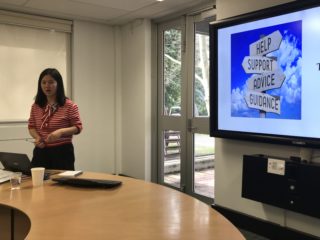
Feminist Digital Visual Posthumanism: One Theory by Katie Warfield

The Sky is Falling Upon Us: Cinematic Vision and the Flesh of the World by Kirsten Hudson and Antonio Traverso
This presentation enacts a chiastic cinematic tale of fleshy celestial and human bodies. It applies film phenomenology and structural film methodology to an engagement with a series of recent documentaries from around the world, which seek to visualise both material and imagined connections between the human lifeworld and the perceptible celestial domain. These films, it is proposed, challenge the disciplining of gesture and perception through the activation of an aesthetics of sensation that questions hegemonic regimes of visuality, which is expressed in the affective methods the films use as they seek to ‘touch’ an audience. We seek to undermine the presentation’s chiastic structure through a poetics of the chiasm or intertwining, which disturbs the binaries and encourages the perception of an encroachment between the viewing and the viewed. Within this borderless cinematic vision, the sky is always upon us, as we are ‘enfleshed’ within it with all our violence, indifference, and sentient beauty.
Kirsten Hudson is a trans-disciplinary artist and writer, and a Screen, Photography and Cultural Studies academic at Curtin University, and her research focuses on the philosophies, histories, and materialities of the body.
Antonio Traverso is Senior Lecturer in Screen Studies at Curtin University, and his research focuses on experimental and political cinema, film philosophy, and memory and trauma studies.
There is no recording of this presentation.

What does the internet world of Chinese teenagers look like?
8 February 2019
This group of children’s Internet problem researchers from China, with an average age of 10 years, use their own eyes to find problems around them. They researched the questions below between schools and classmates and gave their answers personally. They are called Children Research Officers (CRO). This time, the questions they studied include:
1. Do you think the underage youths should or should not make friends in the game?
2. What are the differences between online learning and offline learning?
3. Do you have conflicts with your parents because of using electronic products?
4. Do you think it is suitable for children spending time on short videos?
They have already delivered a speech at the Children’s Internet Conference (YIGFCN) with their own reports in China. They come to Curtin University this time, with their research findings, and look forward to having meaningful communication with you here!
There is no recording of this presentation.
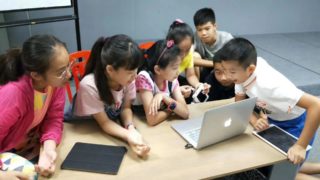
Beyond Translation: Chinese online translation communities and cultural 'Newness' by Yaoxia Zhu
24 January 2019
In China, translation, and translation practices have undergone considerable and rapid change over the past decade: translation is set apart from its predecessors by internet mediation and the emergence of UGT (user-generated-translation). The practice of UGT embodies distinctive features in its selection of content, strategies and objectives, as well as the translators’ subjectivity and their co-constitutive relationship with technology.
Translation and dialogue figure prominently in the ‘semiosphere’, a concept introduced by the Russian semiotician Yuri Lotman. Lotman holds that translation and dialogue activate the semiotic exchanges between inter-cultural and cross-cultural systems, thereby leading to cultural changes and evolutions. Thus, how translation produces, mediates and transforms the relational encounters within and between groups, cultures and systems will shed light on the dynamics of culture.
Using case studies of three Chinese online translation communities, this research examines the operation and dynamics of this current translation phenomenon. By examining the shifting relationships between the forces of globalization, government policies, technology, models of traditional translation practice, and participatory citizenship, it presents a comprehensive contextual analysis. The research argues that user translation communities in China have become an important driving force behind cultural newness in the digital age.
Yaoxia Zhu is currently a lecturer in Zhejiang University of Media and Communications and a PhD candidate of CCAT of Curtin University. With a Master degree in foreign languages and literature, she has a keen interest in translation, linguistic studies, and cultural studies. Through the PhD project, she has broadened her research scope by incorporating other disciplinary discoveries from cultural semiotics, cultural science, media studies and humanities.
